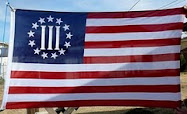 Knut Haugland: A real-life Hero's adventure story
Knut Haugland: A real-life Hero's adventure story He fought the Nazis. He braved the Pacific. And he hated being called a hero. Jonathan Brown looks at the extraordinary career of Knut Haugland, the last Kon-Tiki survivor.
Adventure stories rarely come more epic than that of Knut Haugland, the Norwegian resistance fighter who died on Christmas Day at the age of 92. His exploits were already the stuff of legend even before he joined Thor Heyerdahl's crew aboard his balsa wood raft, Kon-Tiki. Together they not only conquered the vast expanse of the Pacific Ocean using only the most primitive of technologies – but in doing so, they helped rejuvenate the crushed spirit of human endeavour in the bleak aftermath of the Second World War.
A heavily decorated commando who escaped three times from the clutches of the Nazis, his bravery and endurance gave rise to one of the most enduring legends of the Second World War – one retold in spectacular style in a Hollywood movie.
Yesterday Haugland's successor as director of the Kon-Tiki Museum in Oslo, where thousands flock each year to relive the optimism and excitement of that intrepid voyage, announced that the former radio operator had succumbed to natural causes in a city hospital, closing the final chapter on an extraordinary life.
Haugland's death, following that of Heyerdahl himself in 2002, marks the passing of the last of the six-man crew that set sail from Callao in Peru in April 1947, bound several thousand nautical miles for the far-flung islands of Polynesia based on little more than an anthropological hunch. That journey set a new benchmark for modern adventurers, spawning an international best-selling book published in 66 languages and an Oscar-winning film in which Haugland played himself. It also helped popularise Heyerdahl's passionately held belief that the great oceans had been highways and not barriers for the movement of ancient seafaring civilisations. MORE
























